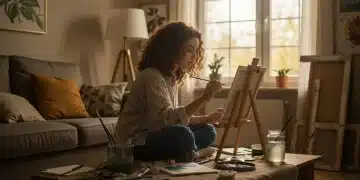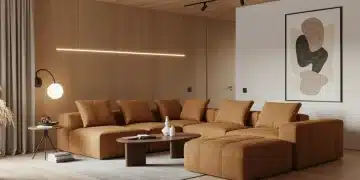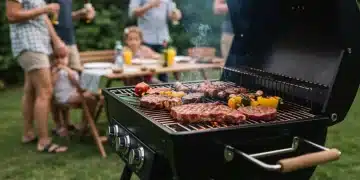Explore New Hobbies: Fastest-Growing Creative Outlets US 2025
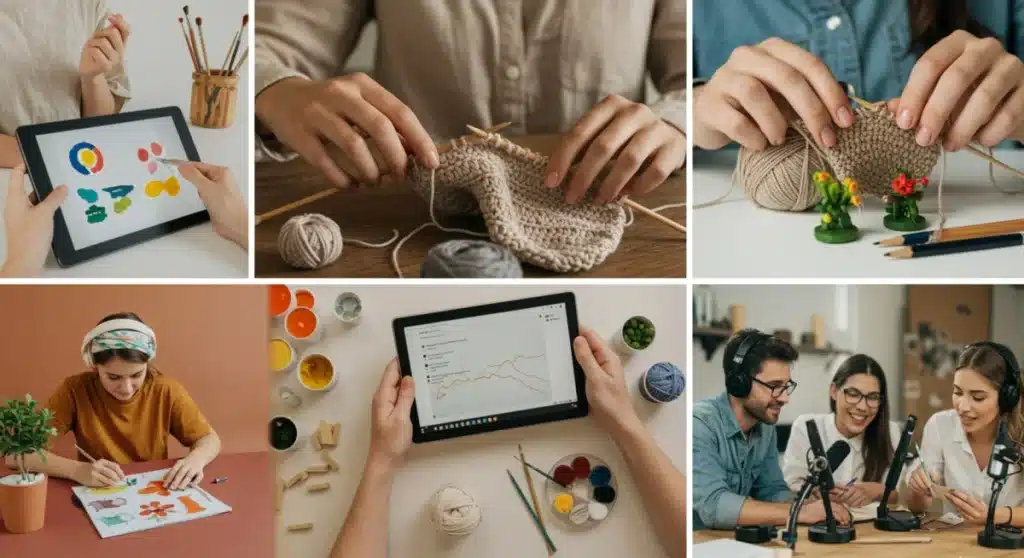
The fastest-growing creative outlets in the US for 2025 include digital art, sustainable crafting, immersive storytelling, and community-based arts, reflecting a societal push towards personal expression and mindful engagement.
Are you looking to deepen your personal fulfillment and explore new avenues for self-expression? Then it is time to explore new hobbies: the fastest-growing creative outlets in the US for 2025, offering unique ways to connect with your inner artist and a vibrant community.
The Digital Renaissance of Creative Expression
The digital realm has profoundly transformed how we engage with creative pursuits. What once required specialized physical tools and dedicated studio spaces can now be accessed and mastered with a tablet and a stylus. This democratization of creativity has opened doors for millions, allowing them to experiment, learn, and share their art like never before.
Digital art, in its myriad forms, stands out as a leading trend. From intricate illustrations and character design to sophisticated 3D modeling and animation, the possibilities are virtually endless. Software advancements have made these tools more intuitive, lowering the barrier to entry for aspiring artists. Furthermore, the ability to instantly share creations on social media platforms fosters a sense of community and provides immediate feedback, fueling further artistic growth.
Emerging Digital Art Forms
Beyond traditional digital painting, several niche areas are experiencing explosive growth. These include:
- NFT Art Creation: The intersection of art and blockchain technology, allowing artists to tokenize their digital creations as unique, verifiable assets.
- Generative Art: Using algorithms and code to create unique visual patterns and designs, often with surprising and beautiful results.
- Virtual Reality (VR) and Augmented Reality (AR) Art: Sculpting and painting in immersive 3D environments, offering a truly spatial creative experience.
- Digital Scrapbooking and Journaling: A modern twist on traditional memory-keeping, leveraging digital tools for enhanced customization and sharing.
The accessibility of online tutorials and communities further accelerates the adoption of these digital hobbies. Platforms like YouTube, Skillshare, and Patreon host a vast array of courses, making it easy for anyone to pick up a new skill from the comfort of their home. This continuous learning environment, coupled with the immediate gratification of digital creation, solidifies the digital renaissance as a cornerstone of creative outlets in 2025.
The digital art scene is not just about tools; it’s about a mindset. It encourages experimentation, iteration, and a willingness to embrace new technologies. As these platforms evolve, so too will the creative possibilities, ensuring that digital expression remains a dynamic and rewarding pursuit for years to come.
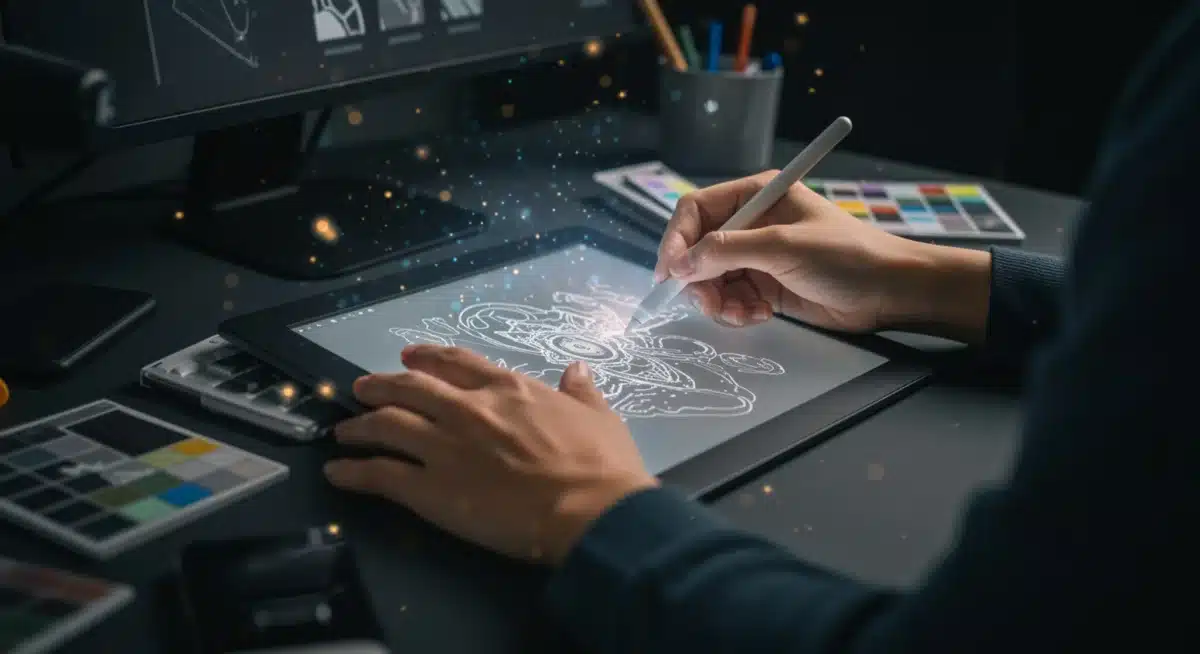
Sustainable Crafting and Eco-Conscious Creations
As environmental awareness grows, so does the popularity of sustainable crafting. This movement goes beyond simply making things; it embodies a philosophy of mindful consumption, waste reduction, and appreciation for natural materials. People are increasingly seeking hobbies that align with their values, leading to a surge in eco-conscious creative outlets.
Sustainable crafting encompasses a wide range of activities, from upcycling old materials into new treasures to creating art from ethically sourced natural elements. The appeal lies in the satisfaction of transforming something discarded or raw into a beautiful and functional object, reducing environmental impact in the process. This trend is particularly strong among younger generations who prioritize sustainability in all aspects of their lives.
Popular Sustainable Crafting Trends
Several areas within sustainable crafting are seeing significant growth:
- Mending and Visible Mending: Repairing clothes and textiles not just for functionality, but to add unique, artistic embellishments, celebrating imperfections.
- Natural Dyeing: Using plant-based materials like avocado pits, onion skins, and flowers to create vibrant, eco-friendly dyes for fabrics and yarns.
- Upcycled Furniture and Decor: Giving new life to old furniture pieces or household items through painting, reupholstering, or repurposing.
- Terrarium and Kokedama Making: Creating self-contained miniature ecosystems or moss balls, connecting with nature indoors.
The rise of farmers’ markets, craft fairs, and online marketplaces dedicated to handmade, sustainable goods also fuels this trend. Crafters can not only enjoy the creative process but also find avenues to share and even sell their creations, fostering a sense of accomplishment and community. The tactile nature of these crafts, combined with their positive environmental impact, offers a refreshing alternative to screen-based activities.
Sustainable crafting is more than a fleeting trend; it represents a fundamental shift in how we approach consumption and creativity. It encourages resourcefulness, patience, and a deeper connection to the materials we use. By embracing these eco-conscious creative outlets, individuals contribute to a greener planet while nurturing their artistic spirit.
The Rise of Immersive Storytelling: Podcasting and Vlogging
In an age saturated with passive content consumption, immersive storytelling hobbies like podcasting and vlogging offer a powerful platform for individuals to share their narratives, expertise, and perspectives. These mediums have moved beyond mere entertainment, becoming significant creative outlets for education, personal branding, and community building.
Podcasting, in particular, has seen exponential growth. Its audio-only format allows for consumption during commutes, workouts, or household chores, making it highly accessible. Vlogging, or video blogging, leverages the visual medium to create engaging and personal connections with an audience. Both require a blend of creativity, technical skill, and compelling narrative to truly stand out.
Key Elements of Successful Immersive Storytelling
To excel in podcasting or vlogging, creators often focus on:
- Niche Content: Specializing in a specific topic, from true crime and historical analysis to personal development and hobby tutorials, to attract a dedicated audience.
- Authentic Voice: Developing a unique personality and communication style that resonates with listeners or viewers.
- High-Quality Production: Investing in good microphones, cameras, and editing software to ensure a professional and enjoyable listening/viewing experience.
- Engaging Storytelling: Structuring content in a way that captures and maintains audience interest, whether through personal anecdotes, interviews, or educational segments.
The barrier to entry for both podcasting and vlogging has decreased significantly. Affordable equipment, user-friendly editing software, and free hosting platforms have empowered countless individuals to launch their own channels. This accessibility has fostered a diverse ecosystem of creators, covering every conceivable topic and catering to every interest.
Beyond personal expression, these platforms offer opportunities for networking, collaboration, and even monetization. Many podcasters and vloggers build strong communities around their content, engaging directly with their audience through comments, Q&A sessions, and social media. This interactive element transforms passive listening or viewing into an active, shared experience, making immersive storytelling a truly dynamic creative outlet.
Community-Driven Arts and Collaborative Projects
While many creative hobbies can be solitary, there’s a significant and growing trend towards community-driven arts and collaborative projects. People are actively seeking opportunities to create together, share skills, and build connections through shared artistic endeavors. This shift reflects a desire for belonging and collective achievement in an increasingly individualized world.
These collaborative creative outlets often manifest in local workshops, online groups, and large-scale public art initiatives. The emphasis is less on individual mastery and more on the collective experience, the exchange of ideas, and the joy of co-creation. This fosters a supportive environment where beginners can learn from experienced practitioners, and everyone can contribute their unique perspective.
Examples of Collaborative Creative Outlets
The types of community-driven arts are incredibly varied, including:
- Mural Painting and Public Art Installations: Groups coming together to beautify urban spaces or create temporary art exhibits that engage the public.
- Community Theater and Improv Groups: Collaborative performance arts that build confidence, teamwork, and storytelling skills.
- Collaborative Story Writing (e.g., Fan Fiction, RPGs): Online or in-person groups co-creating narratives, often building intricate worlds and characters together.
- Crafting Circles and Maker Spaces: Dedicated physical or virtual spaces where individuals can share tools, knowledge, and work on individual or group projects.
The appeal of collaborative projects lies in the shared journey and the diverse perspectives each participant brings. The final product is often richer and more complex than what any single individual could achieve alone. This synergistic effect not only enhances the creative outcome but also strengthens social bonds and fosters a sense of collective identity.
Community art initiatives often have a positive social impact, bringing people from different backgrounds together and fostering civic engagement. Whether it’s a neighborhood garden project with artistic elements or a collaborative quilt-making group, these hobbies provide meaningful avenues for connection and creative expression, making them vital to the landscape of creative outlets in 2025.
Mindful Movement and Expressive Dance
Beyond traditional visual arts, there’s a noticeable surge in creative outlets that blend physical movement with expressive artistry. Mindful movement practices and various forms of expressive dance are gaining traction as holistic hobbies that nurture both body and mind. These activities offer a unique way to explore emotions, improve physical well-being, and connect with oneself on a deeper level.
Unlike competitive sports, the focus in mindful movement and expressive dance is typically on personal growth, self-discovery, and the joy of movement itself. It’s about listening to your body, interpreting music, and allowing your internal landscape to manifest externally through motion. This approach makes it accessible to people of all ages and fitness levels, as the emphasis is on expression rather than perfection.
Growing Trends in Mindful Movement
Several practices are particularly popular:
- Ecstatic Dance: Free-form movement in a safe, judgment-free space, often to diverse music, encouraging uninhibited self-expression.
- Contact Improvisation: A partner dance where the point of contact between two bodies creates the basis for exploration and movement.
- Somatic Practices (e.g., Feldenkrais, Alexander Technique with artistic application): Focusing on body awareness and efficient movement patterns, which can be applied to enhance dance and other physical arts.
- Yoga with Creative Flow: Integrating more fluid, expressive sequences into traditional yoga practices, sometimes incorporating elements of dance.
The increasing focus on mental health and well-being has undoubtedly contributed to the popularity of these hobbies. Mindful movement can be a powerful tool for stress reduction, emotional release, and fostering a stronger mind-body connection. Many participants report feeling a sense of liberation and increased self-awareness through these practices.
Online classes and virtual workshops have also made these activities more accessible, allowing individuals to explore different styles and instructors from anywhere. The combination of physical activity, artistic expression, and mental clarity makes mindful movement and expressive dance a compelling and rapidly growing creative outlet for those seeking a holistic approach to their well-being in 2025.
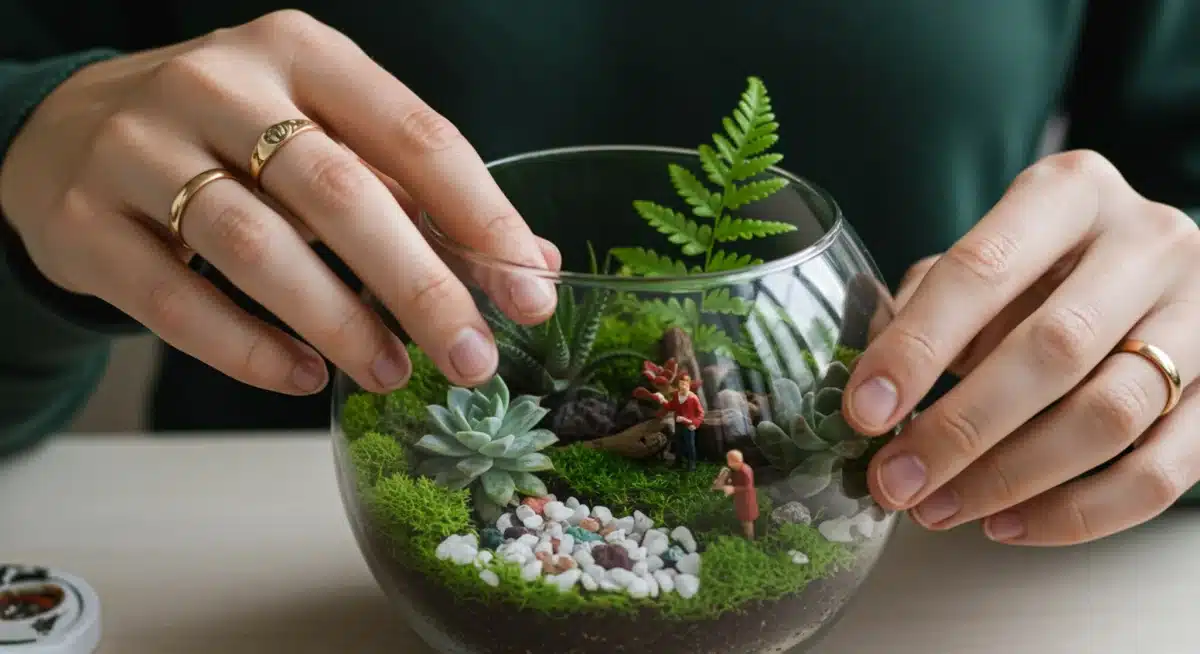
Personalized Crafting: Customization and Bespoke Creations
The desire for uniqueness and individuality continues to drive interest in personalized crafting. In a world of mass production, creating something bespoke, tailored to one’s own tastes or as a unique gift, holds immense appeal. This trend is about more than just making; it’s about infusing personal identity and narrative into every creation.
Personalized crafting spans a vast array of techniques, from custom apparel design and jewelry making to personalized stationery and home decor. The growing availability of affordable tools, materials, and online marketplaces has fueled this trend, making it easier for individuals to turn their creative visions into tangible, one-of-a-kind items.
Key Aspects of Personalized Crafting
Several factors contribute to the growth of this creative niche:
- DIY Customization: Using heat presses, embroidery machines, or vinyl cutters to personalize clothing, accessories, and household items.
- Custom Jewelry Design: Learning silversmithing, beadwork, or resin art to create unique pieces that reflect personal style.
- Hand Lettering and Calligraphy: Crafting personalized cards, invitations, and art prints with distinctive fonts and artistic flair.
- Bespoke Home Decor: Designing and creating unique decor items like custom candles, personalized pottery, or unique textile art for specific spaces.
The ability to create meaningful gifts is a significant draw for many. A handmade, personalized item often carries more emotional weight than a store-bought one, making the creative process even more rewarding. Social media platforms like Instagram and Pinterest serve as powerful inspirations, showcasing endless examples of personalized crafts and fostering a community of creators who share ideas and techniques.
Furthermore, the entrepreneurial aspect of personalized crafting is also appealing. Many individuals start small businesses selling their custom creations, turning a beloved hobby into a lucrative venture. This blend of personal expression, practical skill, and potential for income ensures that personalized crafting remains a vibrant and expanding creative outlet in the US for 2025.
The Intersection of Technology and Traditional Arts
The future of creative hobbies increasingly lies at the fascinating intersection of technology and traditional arts. Far from replacing classic techniques, technology is enhancing them, offering new tools, expanding possibilities, and making age-old crafts more accessible and innovative. This fusion creates exciting new avenues for expression that respect heritage while embracing modernity.
Consider the resurgence of ceramics, now often augmented by 3D printing for initial forms or digital design for intricate patterns. Or woodworking, where CNC machines allow for precision cuts and complex designs previously impossible by hand. This integration isn’t about automation taking over; it’s about technology acting as an advanced assistant, empowering artisans to push boundaries.
Hybrid Creative Disciplines
This evolving landscape gives rise to hybrid disciplines that combine the best of both worlds:
- Digital Embroidery: Using specialized software and machines to create highly detailed and complex embroidered designs.
- Laser-Cut Woodworking and Jewelry: Designing intricate patterns digitally and then using laser cutters to achieve precision and scale.
- Augmented Reality (AR) Enhanced Murals: Creating physical murals that come alive with digital animations when viewed through a smartphone app.
- Smart Textiles and Wearable Tech Art: Integrating electronics into fabric to create interactive clothing or artistic pieces that respond to their environment.
The educational aspect of this intersection is also growing. Workshops and courses are emerging that teach both traditional skills and how to integrate modern technology. This allows crafters to learn foundational techniques while staying relevant and innovative. The ability to prototype designs quickly using digital tools before committing to physical materials also reduces waste and encourages experimentation.
Ultimately, the marriage of technology and traditional arts fosters a deeper appreciation for both. It allows for the preservation of ancient crafts by making them relevant to contemporary artists, and it pushes technological innovation by grounding it in tangible, artistic creation. This dynamic interplay ensures a rich and diverse future for creative outlets, continuing to attract new enthusiasts seeking both heritage and innovation.
| Creative Outlet | Brief Description |
|---|---|
| Digital Art | Creating visual art using digital tools and software, including illustration, 3D modeling, and NFT art. |
| Sustainable Crafting | Eco-conscious hobbies like upcycling, natural dyeing, and terrarium making, emphasizing mindful consumption. |
| Immersive Storytelling | Engaging with audiences through personal narratives via podcasts and vlogs, building communities. |
| Community Arts | Collaborative artistic projects like murals, theater groups, and crafting circles fostering shared creativity. |
Frequently Asked Questions About New Creative Hobbies
Digital art’s accessibility through affordable devices and software, coupled with vast online learning resources and platforms for sharing, makes it highly appealing. It offers endless possibilities for experimentation and instant feedback, driving its rapid growth among new and experienced artists alike.
Sustainable crafts foster mindfulness and a connection to nature by using natural or recycled materials. The process of transforming discarded items or raw materials into something new provides a sense of accomplishment, reduces stress, and aligns with eco-conscious values, enhancing overall well-being.
Podcasting and vlogging create immersive experiences by allowing creators to share personal narratives and expertise directly with an audience. The intimate nature of audio and visual storytelling builds strong connections, fostering a sense of community and deeper engagement than passive content consumption.
Community-driven arts offer significant social benefits, fostering collaboration, skill-sharing, and a sense of belonging. They provide opportunities for individuals to connect with others, contribute to shared projects, and build stronger local communities through collective creative expression.
Technology enhances traditional arts by providing new tools for precision, efficiency, and expanded creative possibilities. For example, 3D printing can create ceramic molds, and laser cutters can achieve intricate woodworking designs, allowing artisans to innovate while preserving core traditional skills.
Conclusion
As we navigate towards 2025, the landscape of creative outlets in the US is dynamically evolving, reflecting broader societal shifts towards digital engagement, environmental consciousness, and community connection. From the boundless possibilities of digital art to the mindful practice of sustainable crafting, and the engaging narratives of immersive storytelling, individuals are finding diverse and fulfilling ways to express themselves. The growing emphasis on collaborative projects and the innovative fusion of technology with traditional arts further underscore a vibrant future for hobbies. Embracing these emerging trends not only enriches personal lives but also strengthens communities and fosters a more creative, sustainable world. Exploring these fastest-growing creative outlets offers a gateway to personal growth, new skills, and meaningful connections.
